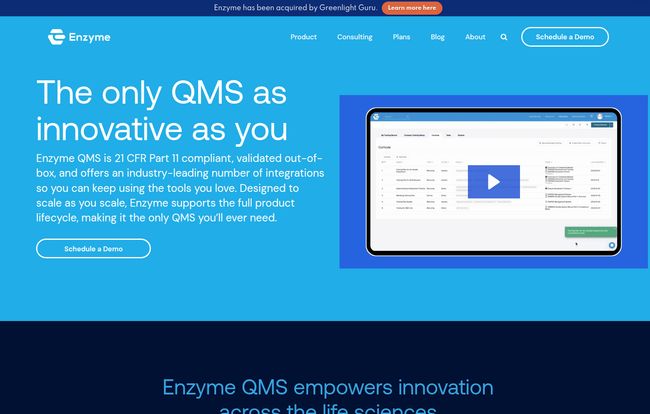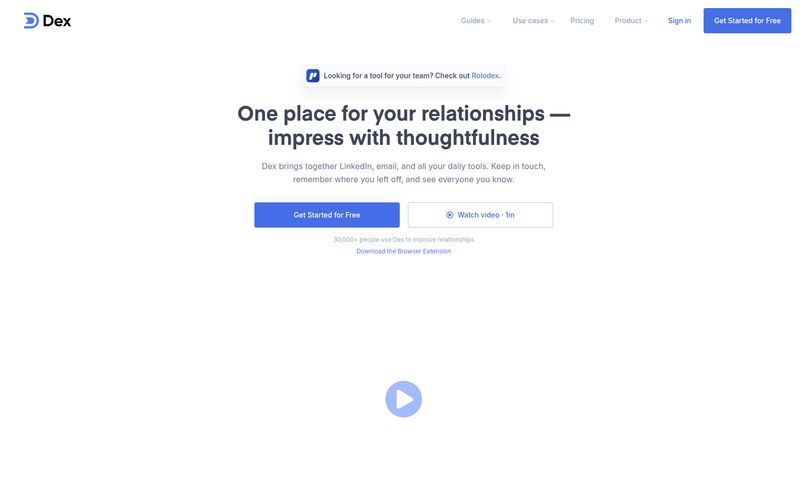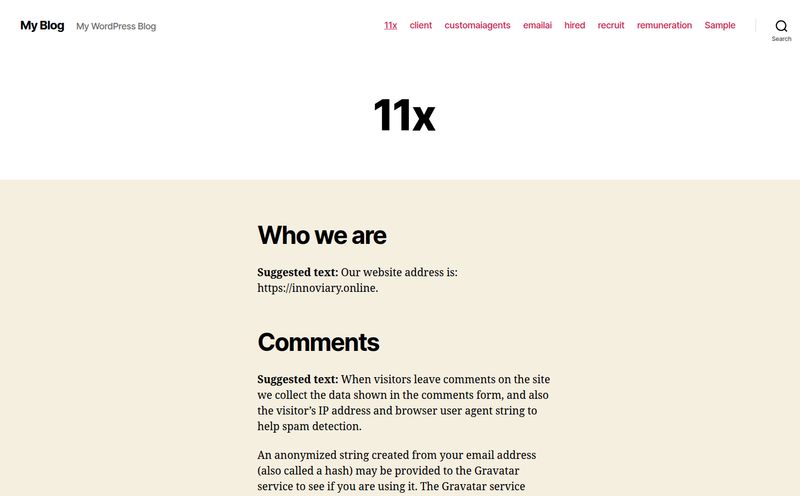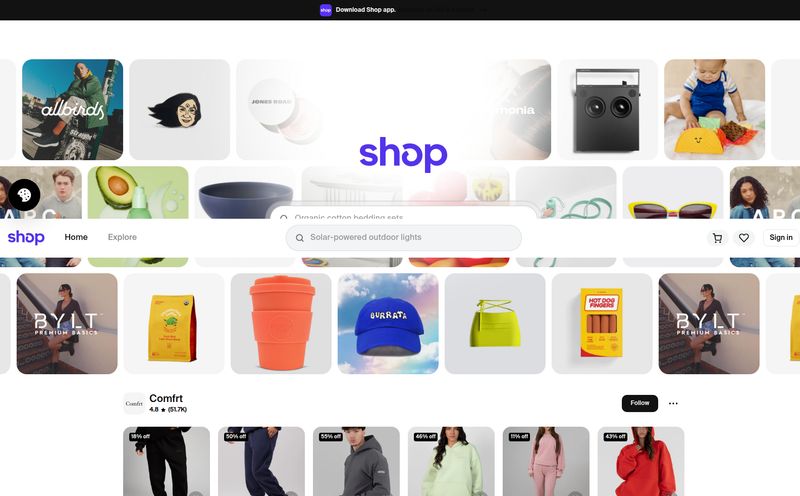If you're in life sciences—med device, biopharma, digital health, you name it—you know the special kind of headache that is quality management. It’s a world of endless binders, terrifying audits, and the constant, nagging fear that a single misplaced document could derail years of work. For years, we've been stuck with clunky, legacy systems that feel like they were designed in the dial-up era. They get the job done, I guess, but they sure don't make it easy.
Then a company like Enzyme comes along with a pretty bold claim: "The only QMS as innovative as you." My inner skeptic always perks up at lines like that. It's great marketing, for sure. But can it live up to the hype? I've been in the SEO and digital strategy space for a long time, and I've seen countless tools promise to revolutionize industries. Some do. Most don't.
So, I decided to take a closer look at Enzyme QMS. This isn't just a feature list. This is a deep dive into what it is, who it's for, how the pricing works, and whether it’s actually the breath of fresh air the life sciences world has been waiting for.
First Off, What Is Enzyme QMS?
At its core, Enzyme is a cloud-based Quality Management System (eQMS) built specifically for life science companies. Think of it less as a piece of software and more as a central nervous system for your entire quality and compliance operation. It’s designed to manage the whole chaotic, beautiful mess of bringing a product to market, from the first sketch on a napkin all the way to post-market surveillance and dealing with customer complaints.
It’s not trying to be a one-size-fits-all solution for every industry on the planet. Its focus is razor-sharp: medical devices, digital health, and biopharma. This is a good thing. It means the features and workflows are built with an understanding of the unique regulatory pressures you face—things like the FDA’s QSR, ISO standards, and cGMP.
One of the first things that caught my eye is its scalability. They talk about supporting companies from "startup to IPO." That's a big promise. It suggests a system that can grow with you, which is a massive relief for any startup founder who has nightmares about migrating their entire quality system in the middle of a growth spurt. It means you can start with what you need and add modules as you mature. Smart.

Visit Enzyme QMS
A Look at The Core Features
A QMS is only as good as its toolset. A boring list of features is, well, boring. So let’s frame it in a way that actually makes sense for the product development journey.
Covering the Entire Product Lifecycle
Enzyme structures itself around the real-world stages of development. It’s not just a digital filing cabinet. It starts with Design Control and Risk Management, which are the bedrock of any new medical product. You can link risks directly to design inputs and outputs, creating that traceability that auditors adore. As you move forward, it handles your Supplier qualification, so you know your entire supply chain is up to snuff.
And when your product is out in the wild? That's where the post-market tools kick in. You've got modules for Complaints, Nonconformance, Audits, and the big one everyone loves to hate: CAPA (Corrective and Preventive Action). Having all this in one integrated system, instead of spread across ten different spreadsheets, is a game-changer. It turns a reactive, panicked process into a proactive, controlled one.
Compliance Without The Constant Panic
Here’s the big one. Enzyme is 21 CFR Part 11 compliant right out of the box. For anyone who's had to deal with electronic records and signatures, you know how huge this is. It means secure, time-stamped audit trails and compliant eSignatures are built-in, not a feature you have to pay extra for or build a custom workaround to achieve. They also claim its validated out-of-box, which can save a ton of time and money on implementation.
The system is designed around the key components of the QSR (Quality System Regulation), cGMP (current Good Manufacturing Practice), and ISO standards. It’s the compliance seatbelt you need to navigate the regulatory highway.
Integrations That Don't Cause Headaches
I saw on their site that they recently added a Microsoft Office 365 integration. This might seem small, but it's brilliant. So many quality documents start their life as a Word doc or Excel sheet. Being able to work with these familiar tools directly within the eQMS, rather than constantly uploading and downloading files, removes a major point of friction. They also integrate with other common tools like Jira, which is great for teams that are already comfortable with their existing project management software. The goal of a good tool should be to fit into your workflow, not force you to adopt a whole new one. Enzyme seems to get that.
My Honest Opinion: The Good and The Complicated
No tool is perfect. Let's get real. Based on what I've seen and the testimonials from folks like Diego Bravo at Endpoint Health and Juan Hinojosa at ClearCom, here's my breakdown.
The upside is pretty clear. It's a comprehensive system that covers the full lifecycle, it's built for compliance, and it's scalable. The user interface looks clean and the testimonials rave about its ease of use and fast document loading. A friendly UI in enterprise software is rarer than a unicorn, so that's a massive plus. The expert support team is another pro; having someone to call when you're facing a quality challenge is invaluable.
Now, for the complicated part. The first thing you'll notice on their website is the lack of a public pricing page. You have to click a "Request pricing" button. As someone who reviews software for a living, this always elicits a small sigh. It’s a common strategy for B2B and enterprise software, allowing them to tailor quotes, but it's a hurdle for teams trying to do quick budget forecasting. Transparency is always appreciated. Another point to consider is that for very large, complex enterprises with decades of unique, entrenched processes, any out-of-the-box system might require some configuration to fit perfectly. That's not really a con of Enzyme itself, but a reality of enterprise software implementation.
Decoding Enzyme's Pricing and Plans
So, about that pricing. While the exact dollar amounts are behind a contact form, Enzyme is quite transparent about how their plans are structured. It’s not just one price; it’s modular, which ties back to their scalability promise.
They break it down into three main packages:
- Core: This is the foundation. It gives you Document Control, Training, eSignatures, and Integrations. It’s the essentials for getting your quality system off paper and into a controlled digital environment.
- Premarket: This includes everything in Core, but adds Design Control, Risk Management, and Suppliers. This is clearly aimed at companies in the development phase, building their first product and their design history file.
- Postmarket: This is the whole shebang. It has everything from the Premarket plan and adds on Audits, Complaints, Nonconformance, and CAPA. This is for companies with products on the market who need to manage the entire quality lifecycle.
They also have two types of users: Full and Lite. My take is that Full users are the people doing the heavy lifting (creating/editing documents, managing processes), while Lite users are likely for people who just need to view documents and sign off on training. This is a smart way to manage costs, as you dont have to pay a full-user price for someone who only interacts with the system once a quarter.
So, Is Enzyme QMS Actually Worth It?
This is the million-dollar question, isn't it? My answer is: it depends, but for the right company, absolutely.
If you're a MedTech or biopharma startup, the Premarket plan looks like a lifesaver. It gives you the structure and compliance you need to build your product correctly from day one, without burdening you with post-market modules you don't need yet. It's an investment that will pay for itself a hundred times over when you're ready for regulatory submission.
For an established company drowning in paper or struggling with a disjointed system of spreadsheets and shared drives, the move to a unified platform like Enzyme could dramatically improve efficiency and, more importantly, your compliance posture. The cost of a single major audit finding or a product recall can easily dwarf the cost of an eQMS subscription for decades.
The lack of public pricing is a hurdle, but I wouldn't let it be a dealbreaker. It signals that they want to have a conversation to understand your needs, which is probably for the best with something as critical as a QMS. This isn't like buying a new coffee maker; its a foundational piece of your business.
Frequently Asked Questions about Enzyme QMS
Is Enzyme QMS fully compliant with FDA 21 CFR Part 11?
Yes, according to their documentation and features, Enzyme QMS is designed to be 21 CFR Part 11 compliant out-of-the-box. This includes features like electronic signatures, secure audit trails, and access controls.
What specific industries is Enzyme QMS best for?
Enzyme is built specifically for the life sciences sector. This includes medical device manufacturers, biopharmaceutical companies, and digital health (SaMD) companies that need to adhere to strict regulatory standards.
Can Enzyme integrate with software my team already uses?
Yes, integrations are a key feature. They highlight their Microsoft Office 365 integration and also connect with other common tools used in development and project management, such as Jira, to create a more connected workflow.
How much does Enzyme QMS cost?
Enzyme does not list specific prices on its website. Pricing is quote-based and depends on the plan you choose (Core, Premarket, or Postmarket) and the number and type (Full or Lite) of users you need. You need to contact their sales team for a custom quote.
Is Enzyme a good choice for a small startup?
It appears to be. The platform is designed to be scalable, and the modular plans (like the Premarket plan) allow startups to adopt the features they need for development without paying for a full enterprise suite they won't use yet.
What's the difference between a 'Full' user and a 'Lite' user in Enzyme?
While not explicitly defined in-depth publicly, a Full user typically has permissions to create, edit, and manage processes within the QMS. A Lite user generally has more limited permissions, such as viewing documents and providing electronic signatures for training or approvals, making it a cost-effective option for team members with limited QMS interaction.
Final Thoughts
Look, navigating the world of quality management in life sciences is never going to be 'easy'. It's complex by nature. But it doesn't have to be a nightmare. Tools like Enzyme QMS represent a significant shift away from the archaic, paper-based systems of the past. It's about working smarter, not harder.
By building a system that understands the full product lifecycle and embeds compliance into its DNA, Enzyme is making a strong case for its "innovative" claim. If you're tired of fighting with your QMS and want a system that feels more like a partner than an obstacle, starting a conversation with them seems like a very sensible next step. It might just be the last QMS you'll ever have to shop for.



